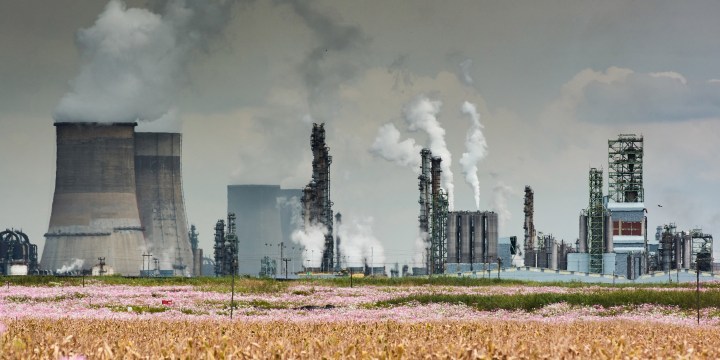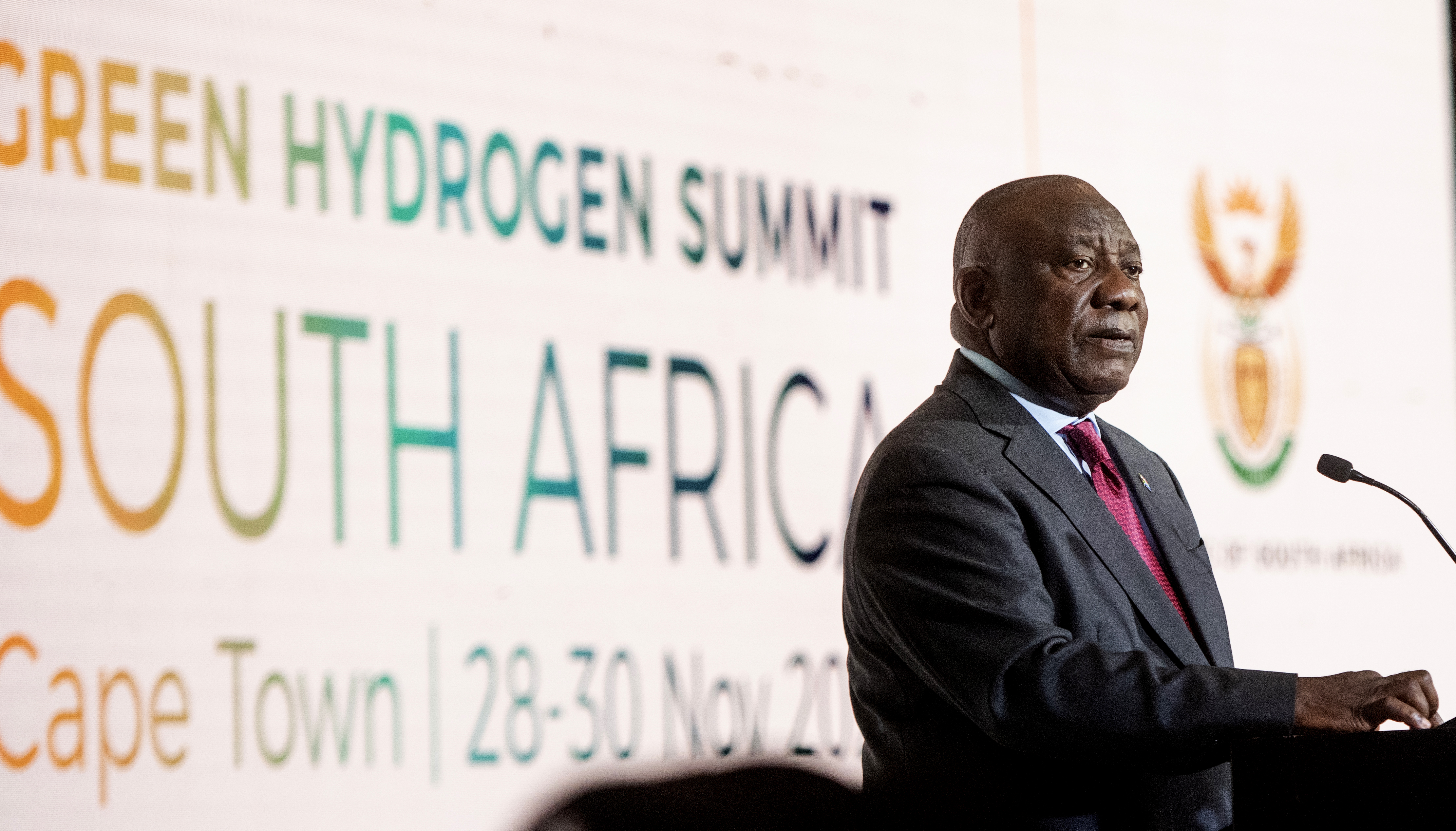RENEWABLE ENERGY OP-ED
South Africa must beware of falling victim to green hydrogen imperialism

It has been noted that, ‘Hydrogen is being promoted through a powerful international, political and media machine, associated with the incumbent fossil fuel industry, and it is lobbying governments around the world.’
The International Energy Agency’s (IEA’s) “net zero emissions scenario” for the world requires a massive 17,000 TWh of green hydrogen energy to be available by 2050, more than the US and China’s current electricity production. A recent estimate puts the size of the global green hydrogen market at $89-billion by 2030.
The opportunities this poses have not gone unnoticed in South Africa — one of the top 20 CO2-emitting countries in the world. In 2021, it launched a Hydrogen Society Roadmap. South Africa is already a heavyweight in hydrogen — its Sasol Group is one of the world’s largest producers of hydrogen. This is, however, of hydrogen using fossil fuels, mainly coal and gas, as a source of energy. As a result, Sasol is South Africa’s second-largest single emitter of CO2.
South Africa has, however, no green hydrogen economy. Sasol produced its first green hydrogen only a few months ago. Around R391-billion (around $22-billion) will need to be invested between 2023 and 2027 to build green hydrogen capacity. Nine Strategic Integrated Projects (SIPs) have been declared, and a $1-billion green hydrogen fund established.
South Africa’s green hydrogen industrial policy thrust is extremely risky. First, it is not at all given that the world’s demand for green hydrogen would grow as fast as is assumed. Currently, it costs about $3-$6.60 per kg for green hydrogen, compared with $1-$2 per kg for fossil fuel alternatives. By 2030, the average cost for South Africa to produce green hydrogen in its “Hydrogen Valley” is estimated to be $4 per kg. At the same time, the US is investing in a “hydrogen shot” to reduce its costs to $1 per kg by around 2030.
Second, even if the demand for green hydrogen would be there, it is not clear that supplying enough green hydrogen is possible over the timeframes mentioned. One constraint is the production and availability of electrolysers. A recent study noted that global capacity to manufacture electrolysers “needs to grow 6,000-8,000-fold from 2021 to 2050 to meet climate neutrality scenarios compatible with the Paris Agreement, [but that] 80% of additional capacity announced to come online by 2023 is not yet backed by a final investment decision”.
A further supply constraint facing South Africa is its geographical position. Saldanha Bay harbour is around 6,100 nautical miles from Rotterdam. Shipping hydrogen as highly compressed (at 250-500 bar) hydrogen gas (CGH2) currently is limited to 4,000 nautical miles. Shipping it as liquefied gas (LH2) is not yet commercially possible or viable — the first LH2 tanker was only launched in 2019 — and by liquefying hydrogen, between 30-40% of its energy is lost. This leaves only synthetic fuels, such as ammonia and aviation fuels, to be exportable from South Africa for the time being.
A final supply constraint facing South Africa is water — the most essential ingredient to produce green hydrogen. Making 1kg of hydrogen requires roughly 10 litres of pure water. South Africa is a water-stressed country facing water crises. Seawater needs to be desalinated — which makes the hydrogen more expensive.
South Africa’s green hydrogen industrial policy’s success hinges on the imminent availability of three sets of new technologies:
- To make the production of green hydrogen cheaper;
- To enable long-term transportation; and
- To use direct seawater electrolysis.
It also depends on coordinated policies and investments in Europe to scale up the use of green hydrogen and on strategic investment plans of producers in competing countries.

President Cyril Ramaphosa at the inaugural South Africa Green Hydrogen Summit at Century City Convention Centre on 29 November 2022 in Cape Town, South Africa. (Photo: Gallo Images / Brenton Geach)
‘Ridiculous energy alternative’
It assumes that green hydrogen will maintain its favourable renewable energy image as a contributor to net zero — which may not be the case. For instance, hydrogen has been called “the dumbest, most ridiculous energy alternative”, which is “insanely far from being renewable because it has no energy; energy has to be forced into it like a battery, and you lose even more energy when converting it back to electricity [only to] … deliver hydrogen to non-existent hydrogen vehicles”.
The danger is that if South Africa succeeds in expanding its capacity to produce green hydrogen (which is all but certain), but faces insufficient global demand, it will use this capacity for non-green (grey, black or blue) hydrogen production, which could compromise the country’s ability to achieve its net zero commitment.
Why is South Africa taking these risks? Do policymakers and industry champions really think that the country could boost economic growth, create jobs, and decarbonise the economy in one stroke?
South Africa is not the only developing country that has discovered the lure of green hydrogen. Other African countries that have developed similar green hydrogen industrial strategies include Kenya, Mauritania, Egypt, Djibouti, Tunisia, Morocco and Namibia. Like them, South Africa has concluded several green hydrogen agreements with European countries, which are struggling with their energy transition. European countries do not have the same plentiful year-round availability of solar energy as African countries.
The European strategy is to overcome this by importing the solar energy stored in a chemical green hydrogen “battery”. As Ad van Wijk from Delft University of Technology in the Netherlands put it, a solar panel in Africa “generates 2-3 times as much power as one in the Netherlands. If you convert that power to hydrogen, transport it here and turn it back into power via a fuel cell, you are left with more energy than if you install that solar panel on a Dutch roof.”
This seems reasonable, and indeed a lucrative export if Africa could meet 10% of the global demand for green hydrogen and derivatives by 2050.
South Africa currently generates less than 4% of its primary energy needs from renewables. If this is dedicated to green hydrogen production, where around 20-30% of the energy is lost, it significantly reduces the availability of clean electricity for local use — it could deprive many households and local firms who already face energy poverty, of potential electricity.
Until the country’s energy demands are fully met, it seems uneconomical and unwise to waste local electricity to produce chemical batteries for export to wealthy countries in the Global North.
It has been noted that, “Hydrogen is being promoted through a powerful international, political and media machine, associated with the incumbent fossil fuel industry, and it is lobbying governments around the world.” Indeed, globally, there is already resistance building against “green” imperialism or colonialism, whereby countries in the Global South are used by the EU as “battery-countries”.
South Africa is staking significant resources on a high-risk green industrial strategy that seems premised on green imperialism, catering to the needs of the Global North and promising profits to the country’s rich fossil fuel industry and mines, but potentially leaving South African households to languish in energy poverty. DM
Wim Naudé is Visiting Professor in Technology, Innovation, Marketing and Entrepreneurship at RWTH Aachen University, Germany; Distinguished Visiting Professor at the University of Johannesburg; a Fellow of the African Studies Centre, Leiden University, the Netherlands; and an AI Expert at the OECD’s AI Policy Observatory, Paris, France.







 Become an Insider
Become an Insider
Comments - Please login in order to comment.